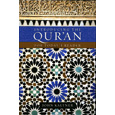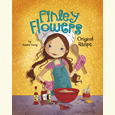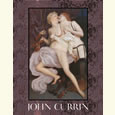Learning from the Lady Lovers
Historian Cookie Woolner unearths communities of Black queer women in the 1920s and ‘30s
“Went out last night with a crowd of my friends,” sang Ma Rainey. “They must’ve been women, ‘cause I don’t like no men.” In The Famous Lady Lovers, historian Cookie Woolner uncovers a world suggested by the lyrics of the legendary blueswoman. In the 1920s and 1930s, Black queer women built communities in a wide range of venues, from speakeasies to literary salons. These women, some famous and some not, fashioned extraordinary and unconventional lives. Woolner compellingly demonstrates how they shaped American history.
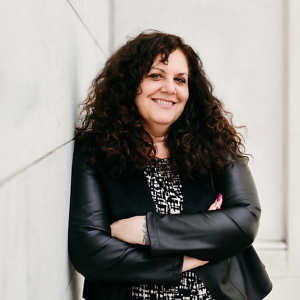 Cookie Woolner is associate professor of history at the University of Memphis and earned her Ph.D. in history and women’s studies from the University of Michigan. She has held fellowships at Case Western Reserve University and Kalamazoo College. Her writing has appeared in venues such as The Journal of African American History and Harper’s Bazaar. Woolner answered questions via email from Chapter 16:
Cookie Woolner is associate professor of history at the University of Memphis and earned her Ph.D. in history and women’s studies from the University of Michigan. She has held fellowships at Case Western Reserve University and Kalamazoo College. Her writing has appeared in venues such as The Journal of African American History and Harper’s Bazaar. Woolner answered questions via email from Chapter 16:
Chapter 16: The subjects at the center of The Famous Lady Lovers face multiple prejudices: They are women, they are Black, and they are queer. Why did you choose to tell their stories? If we are seeking to understand the American past, what do we gain from studying them?
Cookie Woolner: As a queer woman myself, I started grad school with the specific goal of researching and writing about lesser known, unconventional women. In the 1920s, women like Bessie Smith and Ma Rainey were some of the first Black celebrities of the 20th century, and they were having relationships with women (in Smith’s case) or were rumored to and wrote songs about it (in Rainey’s case) during the height of their popularity. In the 1930s, women like Lucy Diggs Slowe, the first dean of women at Howard University, made a life with another woman — teacher and writer Mary Burrill — and sought to instill feminist values into a generation of Black female college students. As these two examples show, Black queer women were leading figures in American culture in the interwar years, which is no small feat considering this was also the Jim Crow era of racial segregation.
Chapter 16: How did male authorities in Black communities interpret queer relationships among women? Did the women pose a threat?
Woolner: In the 1920s, Black male journalists and religious leaders began to call out what they saw as the “sex problem” of Black women choosing to partner with women instead of men. This was often framed as something that would harm the race, particularly in Black nationalist newspapers like Marcus Garvey’s Negro World. There were concerns around older women and women in positions of authority seducing young innocent women, often recent Southern immigrants.
This was also the time of the Great Migration, when many Southern African Americans were moving north, so the anonymity of city life, which could be freeing, was also seen as dangerous. The lesbian emerged as a new “underworld” character to be avoided, unless one wanted to live in a world of vice and crime. Black “lady lovers” did indeed pose a threat, as they were often presented as violent, and even as murderers, in the Northern Black press at this time.
Chapter 16: Given the social dangers, few queer women flaunted their romantic lives in public, and few left historical records. So how, as a historian, can you investigate their lives? Can primary sources tell us anything?
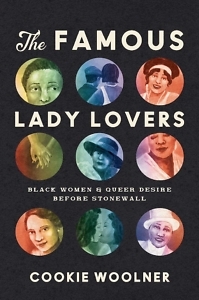 Woolner: The lack of first-person accounts is challenging, but I had a lot to work with, considering the blueswomen wrote many of their own songs, and most of them had biographies that could be parsed. One of my book’s chapters also focuses on college-educated women, some of whom left diaries and archival collections behind. Reading between the lines or “against the grain” — looking for information about queer life that wasn’t created for that purpose — in the Black press, as well as in sociological studies and vice records, was also a big part of this project.
Woolner: The lack of first-person accounts is challenging, but I had a lot to work with, considering the blueswomen wrote many of their own songs, and most of them had biographies that could be parsed. One of my book’s chapters also focuses on college-educated women, some of whom left diaries and archival collections behind. Reading between the lines or “against the grain” — looking for information about queer life that wasn’t created for that purpose — in the Black press, as well as in sociological studies and vice records, was also a big part of this project.
Chapter 16: You write about a number of prominent entertainers, from Bessie Smith to Ethel Waters to Gladys Bentley. How did the worlds of theater and music help to create communities among Black queer women?
Woolner: These performing women were constantly mobile, which facilitated their queer relationships. Blues singer Bessie Smith, for instance, initiated multiple relationships on the road with the dancers in her show. Black performing women’s increasing mobility and their sexual fluidity helped them fashion new relationships and social networks in the interwar era. (Smith herself had a husband as well at this time.) Whether rehearsing performances, socializing backstage, touring on trains, or staying overnight at segregated boardinghouses, many opportunities emerged for women to take part in same-sex relationships or flirtations.
Chapter 16: You also write about “respectable” women who were intellectuals, writers, and teachers. How did they negotiate their private lives with their public personas?
Woolner: Some of them, like writer and activist Alice Dunbar-Nelson, married men and had affairs with women. To be seen as respectable in this era, they had to keep up the appearance of being heterosexual. And while women such as Lucy Diggs Slowe were known to live with other women, they were nonetheless viewed as merely close friends, akin to sisters, which helped maintain respectability as well. So, while the Jazz Age spirit of “anything goes” had taken off in Harlem, for more educated Black queer women who often lived in more conservative places, it was important to distance themselves from the overt sexuality and larger transgressions of the Prohibition era.
Chapter 16: In the popular understanding, at least, the gay liberation movement started with the 1969 Stonewall Rebellion in New York City. How is The Famous Lady Lovers part of a scholarly movement to fashion a more complete and complex history of LGBTQ Americans?
Woolner: I’ve been lucky to find an intellectual home among LGBTQ historians, some of whom work on uncovering queer life in early America, even long before the Civil War. Of course, queer life and queer social movements are two different and overlapping topics, and my focus is more on the former. But I would argue that just to be a Black queer woman in the Jim Crow era was an act of political resistance, and thus, a history of queer resistance can be traced much earlier than Stonewall, as can the creation of queer social networks and identities. This work is more important than ever, considering all the political forces currently trying to limit access to books about African American history and queer life. Queer Americans have always been here, and our stories are more central to this nation’s history than one might think.

Aram Goudsouzian is the Bizot Family Professor of History at the University of Memphis. His most recent book is The Men and the Moment: The Election of 1968 and the Rise of Partisan Politics in America.

